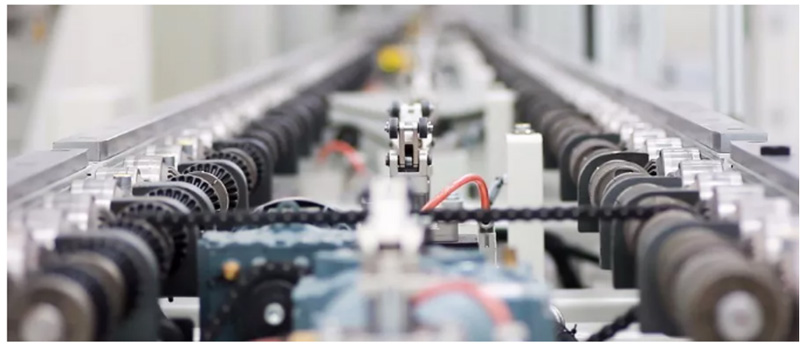How to use a good compressor
- Categories:Industry News
- Author:
- Origin:
- Time of issue:2020-08-27
- Views:0
(Summary description)Compressor equipment is an important part of the production and operation of an enterprise. The use, management, maintenance and repair of equipment to ensure the safety and normal operation of the equipment are important basic tasks in enterprise management and play a pivotal role in the efficiency of enterprise production and operation.
How to use a good compressor
(Summary description)Compressor equipment is an important part of the production and operation of an enterprise. The use, management, maintenance and repair of equipment to ensure the safety and normal operation of the equipment are important basic tasks in enterprise management and play a pivotal role in the efficiency of enterprise production and operation.
- Categories:Industry News
- Author:
- Origin:
- Time of issue:2020-08-27
- Views:0
Good compressor, you have to use it
Compressor equipment is an important part of the production and operation of an enterprise. The use, management, maintenance and repair of equipment to ensure the safety and normal operation of the equipment are important basic tasks in enterprise management and play a pivotal role in the efficiency of enterprise production and operation.
For a large number of compressor users, compressors and other equipment as a company’s hardware facilities are vital tools for the company’s production and operation, and to ensure their ability to use, provide good equipment economic benefits for the company’s production and operation services. It is the main task of compressor management and an important part of enterprise management. Therefore, compressor management and maintenance work is mainly carried out from three aspects: personnel management, maintenance management, and economic accounting.

1. The principles, main content, responsibilities and key points of equipment management.
Principle: Through effective management, use and maintenance of compressor equipment, keep the equipment in good condition, meet production requirements, and implement the management principles of who uses, manages, invests, who benefits, and paid use.
Main content: The company's management work including compressor equipment is in charge of the production deputy general manager. The engineering technology department is the main department of equipment management, with full-time equipment administrators. Its main task is to manage the equipment of each unit and department Business guidance work, cooperate with relevant units and departments to handle the management work of equipment purchase, maintenance, scrapping and disposal to ensure the economy, safety and effectiveness of equipment.
Responsibilities: Each subordinate unit and department is the main body of equipment management, and the equipment management is in charge of the subordinate unit’s deputy production manager, with part-time equipment administrators, and comprehensive management of the equipment used in strict accordance with the company’s equipment management regulations and requirements , The company included the actual completion of various indicators of equipment management in the evaluation of the responsibility objectives of the principals of each unit and linked it to the year-end performance reward evaluation.
Key points of equipment management: First, we must strengthen the training of operators and maintenance personnel. To enable operators to achieve "three understandings, four meetings", three understandings means: knowing operating procedures, understanding equipment performance, understanding structure principles, and four meetings: knowing operation, knowing maintenance, knowing repairs, knowing how to judge and handling general failures. Maintenance personnel must be able to quickly and accurately determine equipment failures, make corresponding maintenance treatments and records, to ensure the normal progress of production, and incorporate work capabilities into the performance appraisal. The purpose is: to improve the operator's level of equipment operation and maintenance management.
Second, we must strengthen the supervision and management of equipment maintenance. In order to effectively control the quality of equipment maintenance, it is necessary to assign special personnel to inspect the maintenance quality in strict accordance with regulations and standards; analyze and find the cause for abnormally damaged components, and make rectification and prevention plans, with the purpose of preventing and avoiding unnatural component damage And improve the technical level of supervision and management.
The third is to strengthen the training of maintenance personnel. With the development of science and technology and the improvement of the equipment level of enterprises, the integration of mechanical, electrical, and hydraulic equipment will gradually increase. Traditional maintenance methods rely on sensory inspection methods to meet the needs of modern equipment maintenance and repair work. We have high-quality talents who have mastered modern testing equipment, can accurately judge faults, and troubleshoot them in time, so as to improve the utilization rate and intact rate of the equipment, provide the necessary mechanical equipment for production in time, and ensure the smooth progress of production.
The fourth is to carry out economic accounting for equipment maintenance. According to the actual technical status of the equipment, determine the time, content and implementation plan that need to be repaired, and use the most economical means to achieve the same goal of equipment management, that is, to maximize the effectiveness of the equipment.
2. Equipment maintenance
Equipment maintenance is divided into daily maintenance, minor maintenance, intermediate maintenance and overhaul according to different maintenance content and workload; according to the object of maintenance, it is divided into internal maintenance and outbound maintenance, which mainly depends on the technical level of unit maintenance personnel and the configuration of facilities Happening. For example, equipment maintenance work is combined with the company’s actual production and operation and management principles, responsibilities and other management systems, adhere to the combination of maintenance and preventive maintenance, strengthen maintenance and management of key parts, and determine the principle of reasonable maintenance time based on equipment status. These measures have improved equipment utilization and new rate to a certain extent, reduced maintenance costs and equipment failure rate, and shortened maintenance downtime. In actual work, the following three different maintenance methods are often used according to the different conditions of the equipment.
Periodic maintenance: large, medium, and minor maintenance. It is a planned and passive maintenance method. It is more suitable for those equipment that has a relatively stable starting time and has mastered the law of wear. According to the law of wear and tear of the equipment itself, develop a realistic repair plan, rather than mechanically set rules and regulations. For example, some equipment has been damaged before reaching the repair period and cannot operate normally. In this case, if the equipment is forcibly repaired in a periodic maintenance period, it will not meet the needs of construction and production. Therefore, when formulating a periodic maintenance plan, it should be carried out according to the operation of the equipment, individual differences in operators, working environment, and implementation of maintenance work.
Post-maintenance: that is, unplanned repairs performed after equipment failures or when the accuracy and performance of the equipment drop below the qualified level. It is a passive maintenance method, which is only suitable for small impact on production, spare parts, simple repairs, Low utilization rate. Such maintenance can reduce equipment downtime. Post-maintenance is only to repair the faulty parts or parts, not to overhaul the entire equipment.
Condition maintenance: Preventive maintenance based on the actual technical status of the equipment. It is an active and active maintenance method that can timely and targeted maintenance of the equipment, so that the equipment is always in good condition, which is more effective than periodic maintenance. The after-the-fact maintenance is more reasonable, and it is suitable for the maintenance of key equipment and accessories that have a high utilization rate and have a greater impact on production after a failure. High precision and large-scale main equipment maintenance.
In summary, the maintenance methods of the equipment have their own advantages, disadvantages and applicability. In actual production, the maintenance party should be selected scientifically and reasonably according to the different characteristics of the equipment and the degree of influence on the production, so as to reduce the maintenance cost of the equipment life. , To give full play to the efficiency of the equipment, to create more benefits for the enterprise.
Concluding remarks
Regardless of the mode of maintenance, it is aimed at the problems that have occurred or will appear. The correct selection of equipment, good operators, qualified maintenance personnel, reasonable spare parts reserve, and effective management system are equipment management and maintenance. The true meaning of.
Scan the QR code to read on your phone
MESSAGES

Business Consulting: 86-18500996153
Beijing Prehot Energy Technology Co. LTD 京ICP备2020034482号-1 Powered by 300.cn


